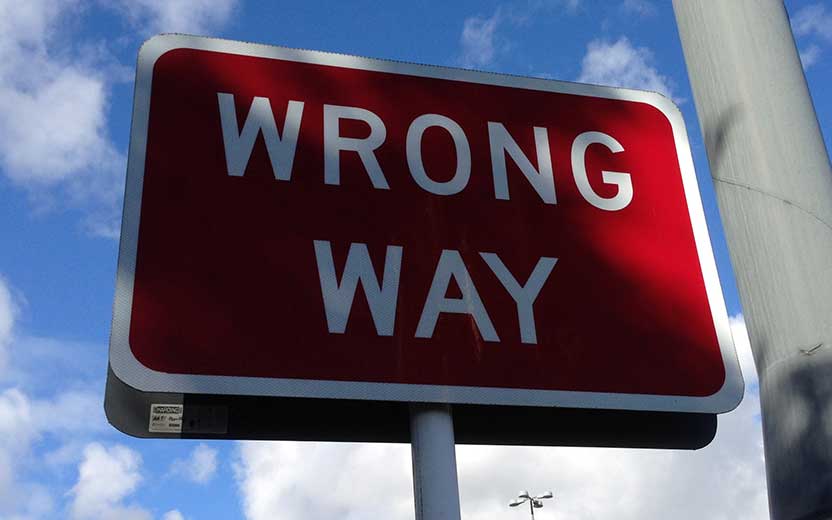By Marcus Fernandez
Bicycling is a great activity for those who want to exercise while protecting the environment. Moreover, it offers an enjoyable means of commuting around town, easily adaptable as a family activity. Unfortunately, unless you limit your bike riding to parks or dedicated bikeways, sharing the road with cars, trucks, and other motorized vehicles exposes bike riders to dangerous conditions and can cause bicycle accidents. It’s no surprise that the bicycle rider is the most likely to sustain injuries or fatalities in a collision.
Tampa Bay has been identified as the deadliest place in Florida for bicycle riders. But, Hillsborough County and the City of Tampa have taken steps to make bike riders safer. This article examines the causes of bicycle accidents and suggests measures to enhance riding safety.
What are the benefits of riding a bicycle?
According to the Bureau of Transportation Statistics of the United States Department of Transportation division, spending on bicycles increased 620% from March 2020 to March 2023. American households have spent $8 billion monthly on bicycles and bicycle accessories over the past year.
Another sign of the popularity of bicycle riding has been the increase in the number of cities across the country, including Tampa, with bike-share services that make bicycle transportation possible even for people who do not own bikes. Apart from its use as a form of transportation, riding a bicycle provides many health benefits. These include cardiovascular fitness, coordination and flexibility, and improved muscle tone. It’s also a great way to trim some of those unwanted pounds.
Riding with friends or finding a local group of riders is a wonderful way to develop social relationships. As a means of transportation, riding a bicycle provides a way to eliminate the fuel, maintenance, and insurance costs associated with cars and other types of motor vehicles. You can also pat yourself on the back for doing your part to reduce air and noise pollution. Riding a bicycle also contributes to lower traffic congestion.
More people would ride bicycles were it not for the 130,000 riders injured and 1,000 killed annually throughout the U.S. The injury and fatality rates in Florida are just as bad with 8,394 bicyclists injured in 2023 and 224 killed. So far this year, there have been 40 fatalities and 1,878 injured.
You can make riding safer by knowing what causes bicycle accidents, the riskier riding conditions, and the techniques and equipment to protect you in case of a mishap. Let’s begin by looking at the peak times and conditions contributing to collisions between riders and motor vehicles.
When do most bicycle accidents occur?
One of the problems faced by bicycle riders is the tendency of people to think of bicycles as children’s toys. Nothing could be further from the truth. Florida law defines a bicycle as a vehicle. It has all the rights and privileges of cars, trucks, motorcycles, and other vehicles. Along with rights and privileges come responsibilities.
Bicyclists have the same right to occupy a travel lane as any vehicle, even when traveling at a slower speed. However, riders must keep to the right side of the road to avoid impeding the flow of traffic. This is true except for when making a left turn.
When you ride affects how safe you’ll be. Data compiled by the Florida Department of Transportation reveals that the ability for riders to see and be seen is worse at night. If you must ride a bike when visibility is poor because of light or weather conditions, wear bright, light-colored clothing. It’s best to add a reflective vest or jacket to make you more visible to motorists.
Equip your bicycle with front, rear, and side reflectors. These stand out when caught in the headlights of motor vehicles and streetlights. State law in Florida requires that bicycles operated between sunset and sunrise be equipped with a headlight. This must be capable of projecting a white light 500 feet and a red light mounted on the back that is visible at least 600 feet to the rear.
These are only minimum requirements to increase your ability to see and be seen when riding under poor lighting conditions. You can install additional lights and reflectors to make your bicycle more visible.
Rules of the ride that bicycle riders must obey
You’ve undoubtedly been in your car and seen people on bicycles making turns without signaling, riding against the direction of traffic, and ignoring stop signs or red lights. Did you wonder: How do they get away with it? The answer is that they don’t.
The rules of the road controlling the behavior of motor vehicle drivers also apply to bicycle riders. If you ride a bicycle and fail to stop at a red light, you face a fine. This is the same way as the driver of a car. You also face a higher risk of sustaining severe injuries or fatalities in a collision. This is higher than the driver of the vehicle that struck you.
The following are rules of the road that apply specifically to bicycle riders. A few relate to how drivers must behave when interacting with people on bicycles:
- Bicycles must be ridden in the same direction as traffic. Riding facing oncoming traffic is not safer than riding with it. Yet, you’ll see people riding against the flow because they think it lets them see and react to what’s coming at them. One problem with riding against the flow of traffic is it increases the risk of being hit by a car turning from side streets, parking lots, and driveways by vehicles driven by motorists who do not expect or look for a bicycle coming from the opposite direction as other vehicles.
- Signal intent to turn right or left. Bicyclists must use hand signals to indicate their intention to make a left or right turn. Because some cyclists need both hands to control a bicycle, the hand signal need not be given continuously throughout the turn.
- Listening devices, including headsets and headphones, may not be used while operating a bicycle. This law prevents the use of any device that could impede a bicyclist’s ability to hear surrounding sounds. However, hearing-impaired riders may use hearing aids. The law permits a rider to use a single device providing sound to only one ear when used with a cellphone.
- Bicycle riders should stay to the right, except when making left turns. You may ride in the right lane of traffic even when you are traveling at a speed slower than other vehicles. However, you should stay as far to the right as safely possible to avoid impeding traffic. This law gives you the right to use as much of the lane as you need. When making a left turn, you may use the left lane to make the turn.
- Drivers making a right turn must leave sufficient space for bicycles. When a driver overtakes and passes a bike going in the same direction, the driver cannot make a right turn unless the bicycle rider is at least 20 feet from the intersection where the motorist plans to make a right turn. It is the responsibility of the motorists to make sure there’s sufficient time and space to safely make the turn. They must do this without interfering with the approaching bicycle.
- When passing a bicycle, drivers must leave at least a three-foot space between their vehicles and the bicycle. Passing too closely to a person on a bike can cause them to lose control. This law imposes responsibility for maintaining a safe distance on drivers of cars and other types of vehicles.
- Bicyclists on sidewalks have the same rights and duties as pedestrians. A bicyclist riding on a sidewalk must have a whistle, horn, bell, or other device capable of emitting an audible signal and use it before passing pedestrians.
Local governments may enact ordinances regarding bicycle operations. These include prohibiting their use on sidewalks or limiting them to sidewalk use only in designated areas.
Florida helmet requirement for bicycle riders
Bicycle riders and passengers younger than age 16 must wear a helmet. The helmet must meet federal safety standards.
Although the law does not require helmets for anyone 16 or older, wearing one could protect you from a severe head or brain injury. Research shows that wearing a helmet while riding a bicycle reduces head injuries by 48%. It also reduces traumatic brain injury by 53% and injuries to the face by 23%.
Where to turn when injured in a bicycle accident?
If you suffer injuries in a bicycle accident caused by another person’s negligence, seek advice and guidance from the personal injury attorneys at KFB Law. You may have a right to compensation from the responsible party for your injuries. These include lost wages, medical care expenses, and pain and suffering. Contact KFB Law today for a free consultation and claim evaluation.


